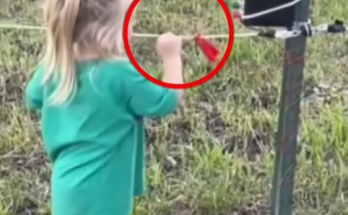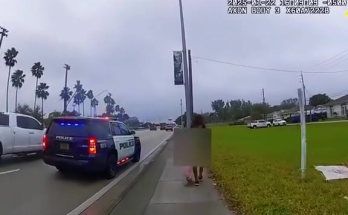Baseball has long been celebrated as America’s pastime—a sport woven into the cultural fabric of the nation, symbolizing fairness, tradition, and innocence. It is a game where fathers and mothers bring their children to the ballpark in hopes of sharing special moments, like catching a foul ball or a home run.
But in the digital age, even moments of joy can be upended by controversy. At a recent game between the Miami Marlins and the Philadelphia Phillies, what began as a heartwarming story of a father catching a home run ball for his son quickly unraveled into a viral scandal. Within hours, a woman in Phillies apparel went from anonymous fan to national talking point, branded online as “Philly’s Karen.”
The incident, captured on video and amplified by social media, sparked debates about parenting, sportsmanship, internet outrage, and the culture of viral shaming. What follows is a closer look at how a single baseball landed at the center of a storm that stretched far beyond the stadium.
The Magical Beginning
It all started at Miami’s Lone Depot Park, where the Phillies faced off against the Marlins. The night had all the makings of a classic ballgame: excitement in the air, fans cheering, and children clutching their gloves, hoping to catch a souvenir.
In the stands, Drew Feltwell, a father attending with his 10-year-old son Lincoln, managed to snag a home run ball. For a brief, shining moment, it was a perfect memory. Drew placed the ball into his son’s glove, giving Lincoln the kind of childhood experience that fans dream of—a reminder of why baseball remains so cherished across generations.
But within seconds, that innocent scene shifted.
The Confrontation
According to witnesses and video clips, a woman wearing Phillies gear approached Drew and Lincoln. She claimed ownership of the ball, insisting that it belonged to her. What followed was an uncomfortable exchange. Drew attempted to reason with her, but under pressure, he eventually took the ball from his son’s glove and handed it over.
The crowd immediately reacted, booing as the woman walked away. To many fans in attendance, the unwritten rule of baseball had been violated: if a child has the ball, you let them keep it.
This moment, though fleeting in the stadium, became much larger once the cameras rolled and the internet got involved.
Going Viral: The Rise of “Philly’s Karen”
Within minutes, clips of the confrontation began circulating online. Social media platforms like TikTok, Instagram, and X (formerly Twitter) amplified the moment far beyond the stadium walls. The woman was quickly dubbed “Philly’s Karen,” a name that carried with it a heavy load of cultural baggage.
Memes flooded the internet. Some video edits paired her walk up the stands with dramatic music like the “Imperial March” from Star Wars. Others digitally altered the ball into symbols of power, mocking her perceived victory. Comparisons were drawn to infamous viral figures—from the “Bagel Boss Guy” to past stadium incidents where adults were criticized for taking baseballs from children.
What could have remained a minor disagreement had now transformed into a national debate about decency, sportsmanship, and public behavior.
The Unwritten Rules of Baseball
Baseball is full of traditions, many of which exist outside the official rulebook. One of the strongest is the etiquette surrounding souvenir balls. Adults may scramble for foul balls or home run catches, but if a child is clearly involved, most fans agree the ball should belong to them.
This unwritten rule is about more than just generosity—it is about protecting the innocence and joy that make baseball so special for young fans. As one sports radio caller put it: “If there’s a kid’s glove in the picture, you walk away. End of story.”
Breaking this rule ignited outrage because it felt like more than just taking a ball; it symbolized taking away a moment of childhood magic.
Internet Sleuths and the Search for Accountability
As outrage grew, online communities mobilized. Amateur sleuths paused video clips, zoomed in on blurry images, and launched speculation threads. The search for the woman’s identity became a digital scavenger hunt.
This hunt, however, had unintended consequences. Several women were mistakenly identified and forced to publicly deny any connection to the incident. Innocent individuals became collateral damage, highlighting the darker side of viral justice.
The relentless pursuit for accountability illustrated how, in today’s culture, silence is often interpreted as guilt. The woman’s refusal to speak publicly only intensified speculation. Each day without her response seemed to fuel the fire further.
Redemption at the Ballpark
While online outrage escalated, stadium officials and team representatives worked quickly to restore positivity to the night. Marlins staff approached Drew and his children, showering them with team merchandise—jerseys, hats, and bobbleheads.
The Phillies organization went even further. After the game, Lincoln was invited into the locker room to meet Harrison Bader, the outfielder whose home run sparked the incident. Bader presented him with a signed bat, creating a new moment of joy to replace the lost one.
For many fans, these gestures represented more than just damage control. They symbolized baseball’s ability to protect its values and ensure that young fans walked away with lasting, positive memories.
The Corporate Twist: A $5,000 Offer
The story took another turn when Blowout Cards, a trading card company, announced a public offer to the woman at the center of the controversy. They pledged $5,000 if she returned the baseball—with the words “I’m sorry” written on it.
The offer sparked debate. Was it a clever marketing stunt or a genuine attempt at reconciliation? Critics argued that it commodified shame, turning a viral controversy into a business opportunity. Supporters, however, viewed it as a creative way to resolve the matter while adding a twist of accountability.
Either way, the offer kept the story in headlines and raised questions about how businesses increasingly capitalize on viral moments in the social media era.
Cultural Reflections: Outrage in the Digital Age
This incident became much larger than a single baseball game because it tapped into broader cultural issues. In today’s connected world, moments that once might have remained local disputes can quickly become global conversations.
The rise of “Philly’s Karen” underscores the speed with which narratives form online. A video clip, stripped of context, can define someone’s identity for millions. Public opinion solidifies quickly, often leaving no room for explanation or redemption.
It also reflects society’s shifting standards of accountability. Silence is no longer seen as neutral; it is interpreted as defiance or guilt. As cultural critics observed, the internet’s demand for statements, apologies, and accountability has turned public relations into a high-stakes game where every response—or lack of response—carries meaning.
Lessons from the Scandal
- Sportsmanship Still Matters: The uproar highlighted the importance of unwritten rules in sports. Fans expect respect, especially toward children, and violating those norms can create lasting backlash.
- Social Media Amplifies Everything: What might once have been a minor stadium incident became a nationwide story because of the internet’s power to amplify outrage.
- Corporate Interests Adapt Quickly: Businesses like Blowout Cards recognized the viral momentum and stepped in, showing how companies can leverage public attention for marketing.
- Privacy in the Digital Era Is Fragile: The hunt for the woman’s identity revealed how easily individuals can be thrust into the spotlight, and how mistakes in identification can harm innocent people.
The Boy at the Center
Amid the controversy, it is easy to forget the child at the heart of it all—Lincoln, the 10-year-old who first caught the ball. For him, the night was a rollercoaster of emotions: joy, disappointment, and eventually redemption.
Thanks to the quick response from the Marlins, Phillies, and Harrison Bader, Lincoln did not leave the stadium empty-handed. Instead, he gained a story he will carry for life—one not just about losing a baseball, but about how kindness and community can restore hope.
Conclusion
What began with a crack of the bat ended as a lesson in modern culture. The Phillies-Marlins home run ball controversy showed how fragile innocence can be in the age of instant outrage, and how quickly private moments can become public spectacles.
While the woman at the center of the storm remains silent, the larger story is about more than her. It is about the power of social media, the expectations of sportsmanship, the reach of corporate branding, and the resilience of a child whose night was transformed by both disappointment and generosity.
Baseball, in the end, survived the controversy. Fans may argue about the unwritten rules, but the game’s traditions and its ability to create lasting memories remain strong. For Lincoln, his story proves that even when innocence is momentarily interrupted, it can be restored—with the right support, kindness, and a little help from America’s pastime.



